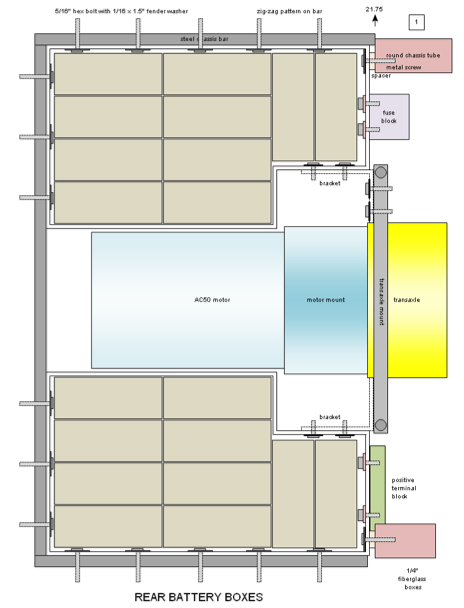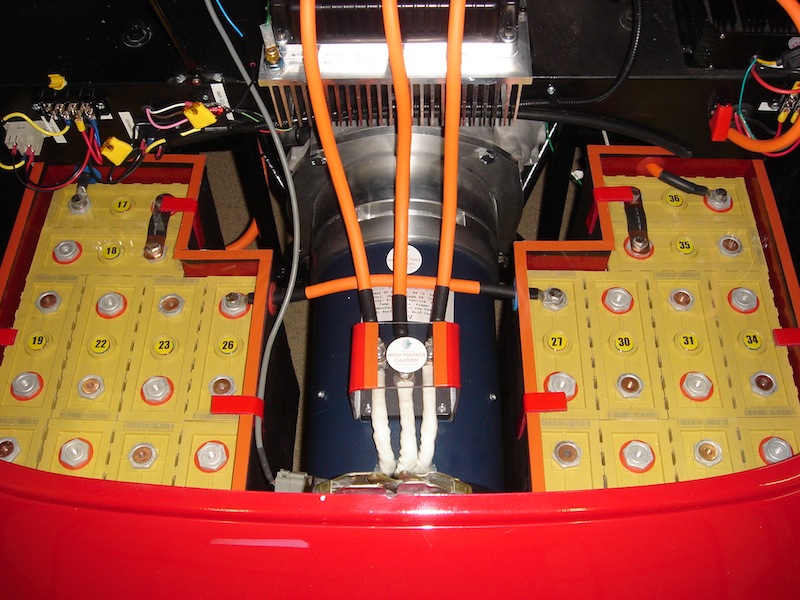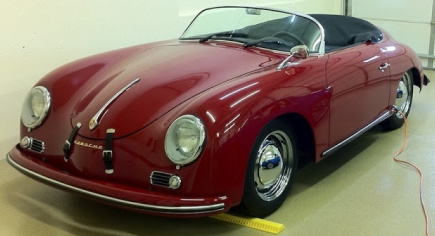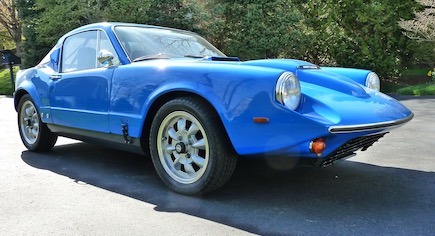Battery boxes

Rear saddle boxes secured to steel chassis
A major design challenge for any electric vehicle involves the location and construction of the battery boxes which hold the cell pack.
Lithium batteries have much lower energy density than gasoline, and thus consume a much larger volume than a typical gas tank.
The electric 356 carries about 425 pounds of cells, distributed to achieve a 50/50 balance front to rear.
Careful consideration must be given to strength, vibration, waterproofing, and maintenance access. The rear cells are placed into two “saddle bag” boxes on either side of the electric motor.
The rear L-shaped saddle box design. molded in fiberglass, optimizes the number of cells.

Ten yellow lithium battery cells packed into each rear box and connected in series
The Cars
Porsche 356 Speedster

The iconic Porsche Speedster proved to be an excellent EV conversion candidate due to its low weight, relatively simple design, and ample front/rear compartments for mounting pristmatic lithium battery cells. Weight distribution was improved over the original rear engine configuration with better acceleration and overall performance.
Saab Sonett

The unusual fiberglass Sonett, originally powered by a Ford V4 engine, combines a low center of gravity and front wheel drive, optimal for our high performance EV conversion. Without the need to accomodate a long drive train, the space behind the two seats was used for additional batteries. The original four-speed transmission remains intact along with the braking system.